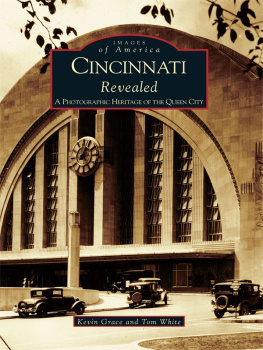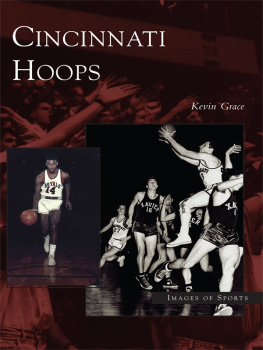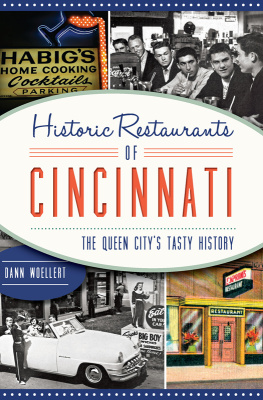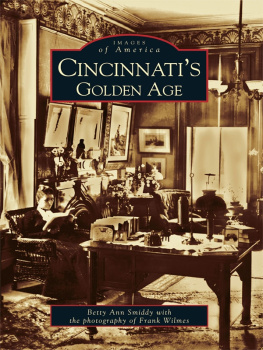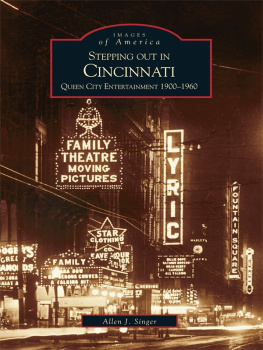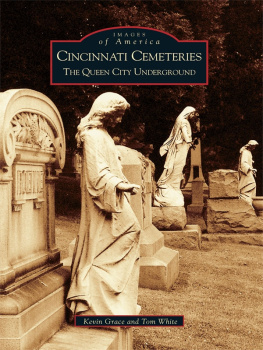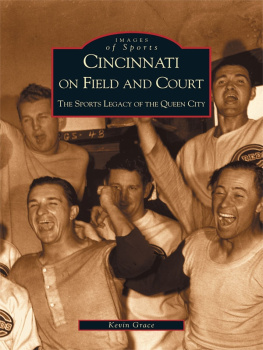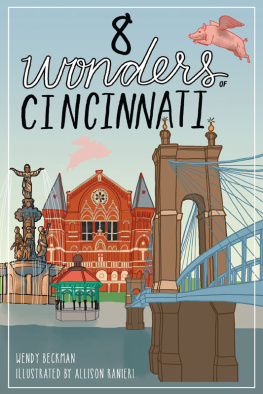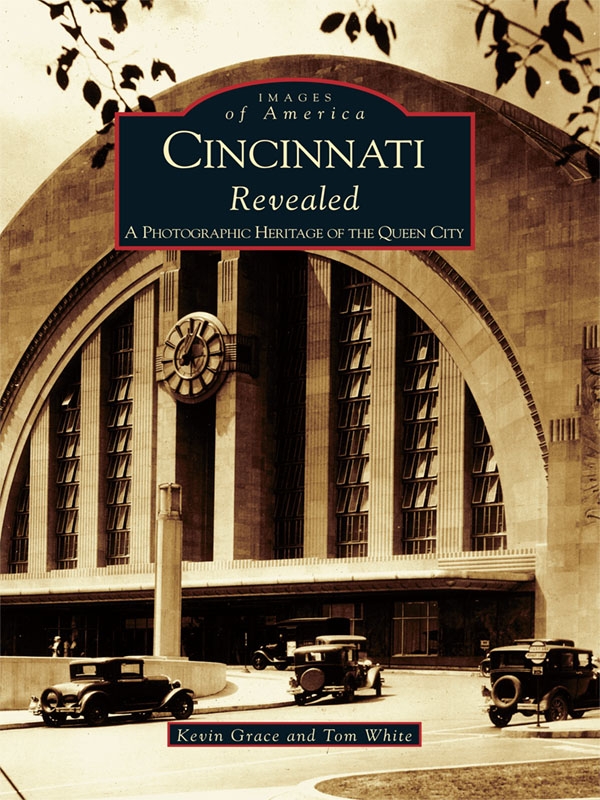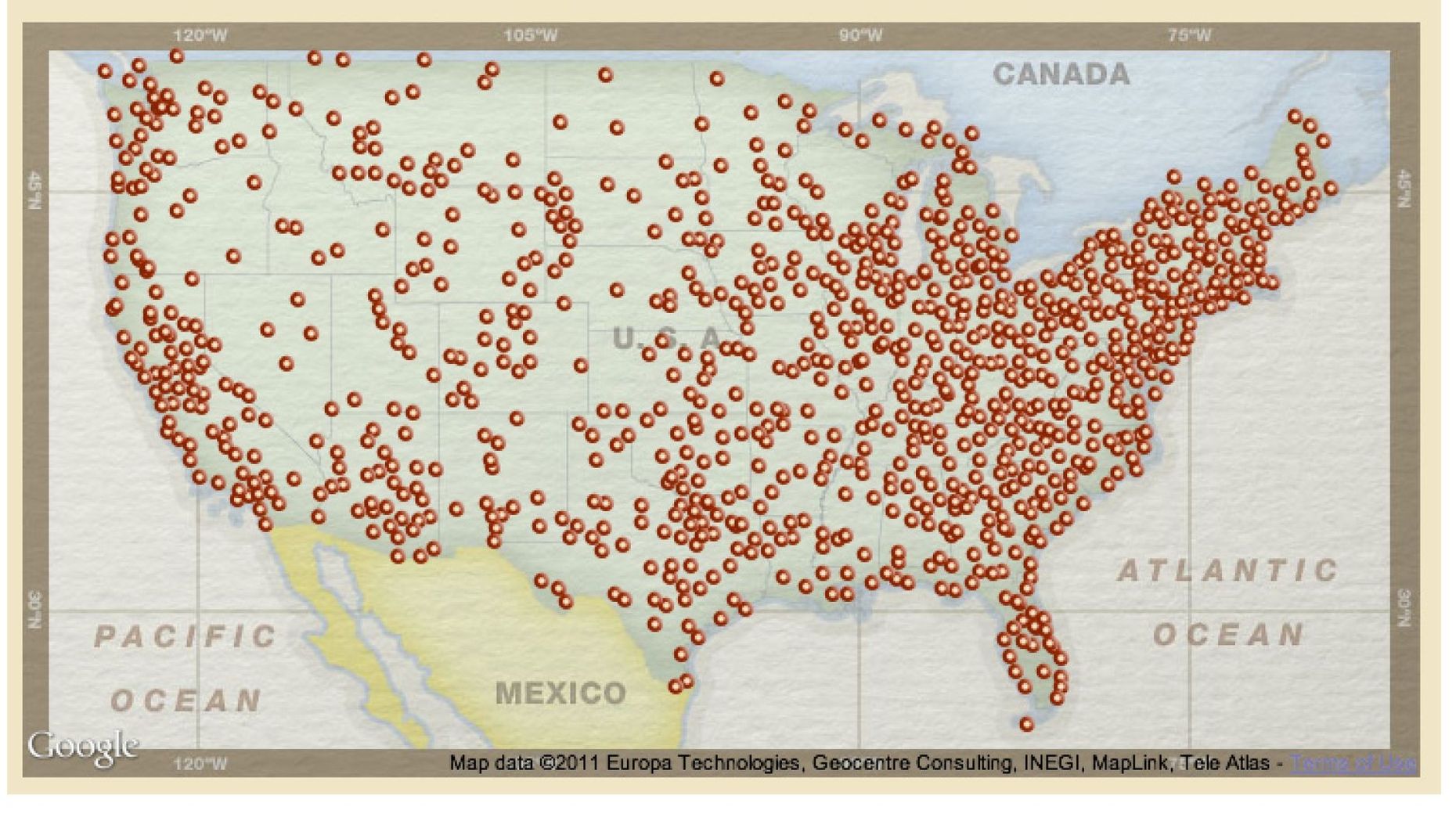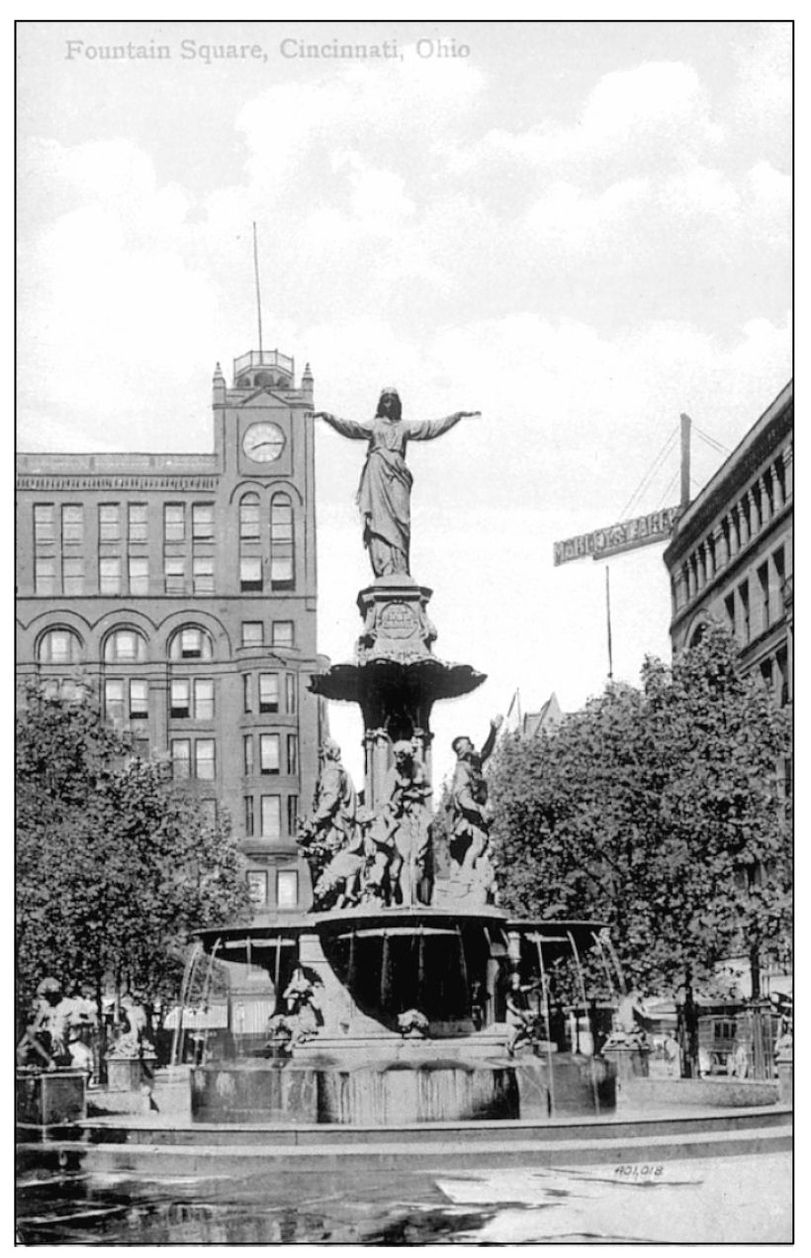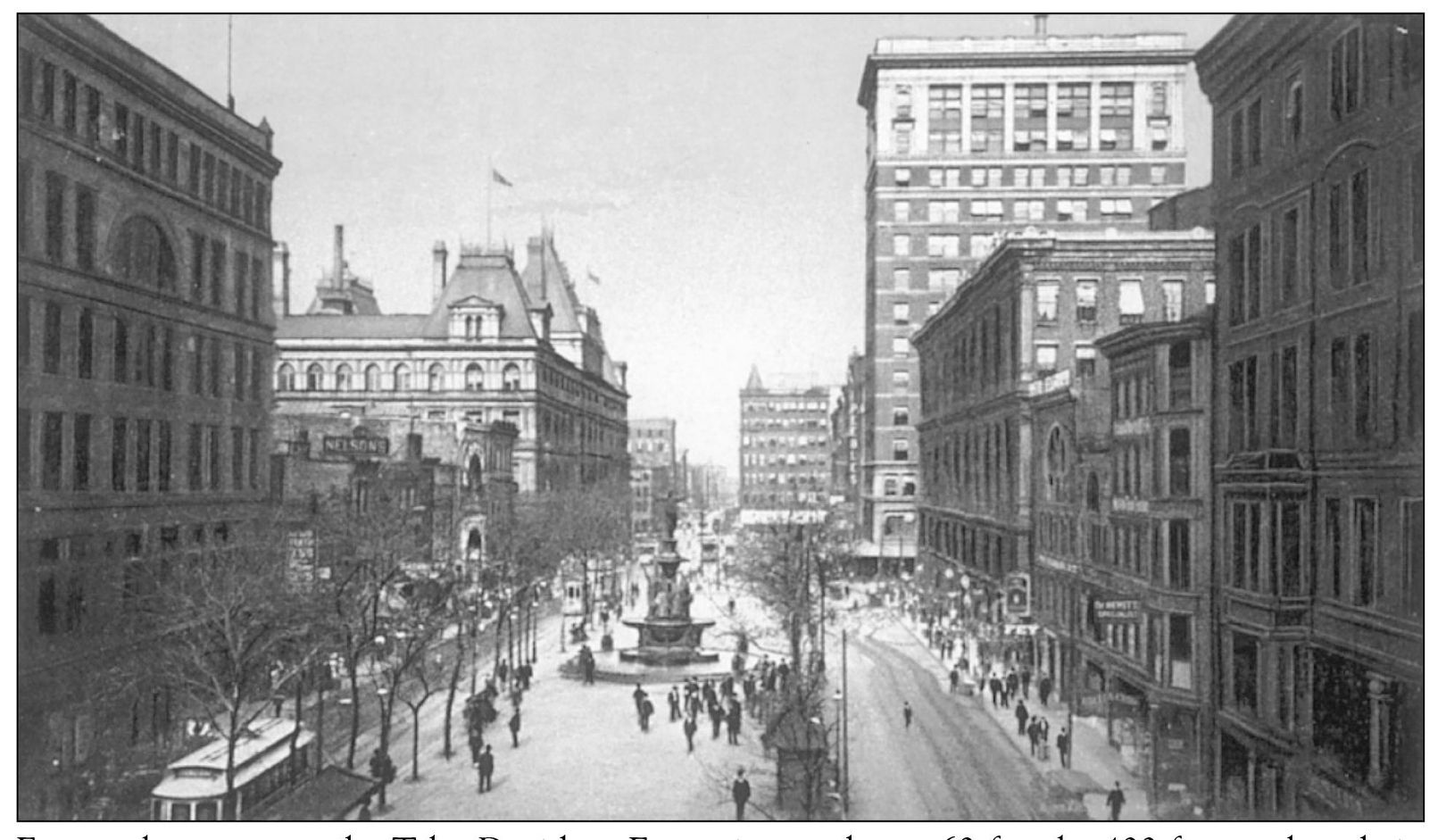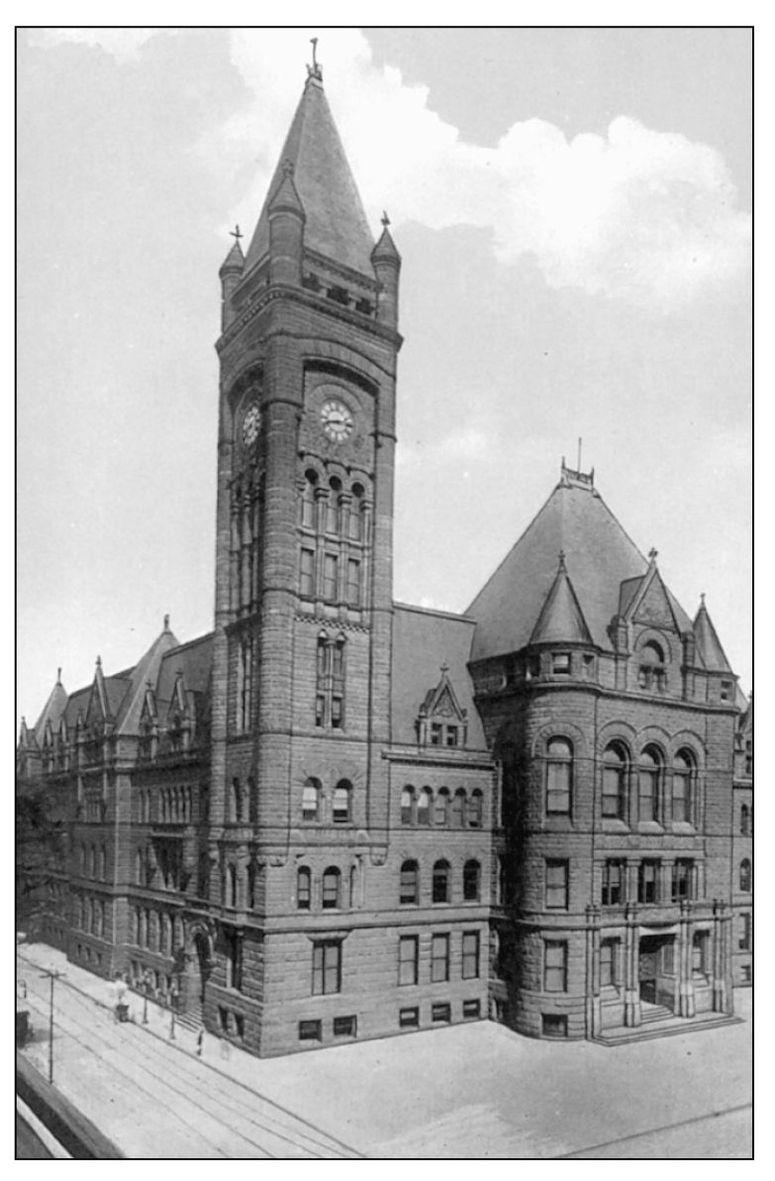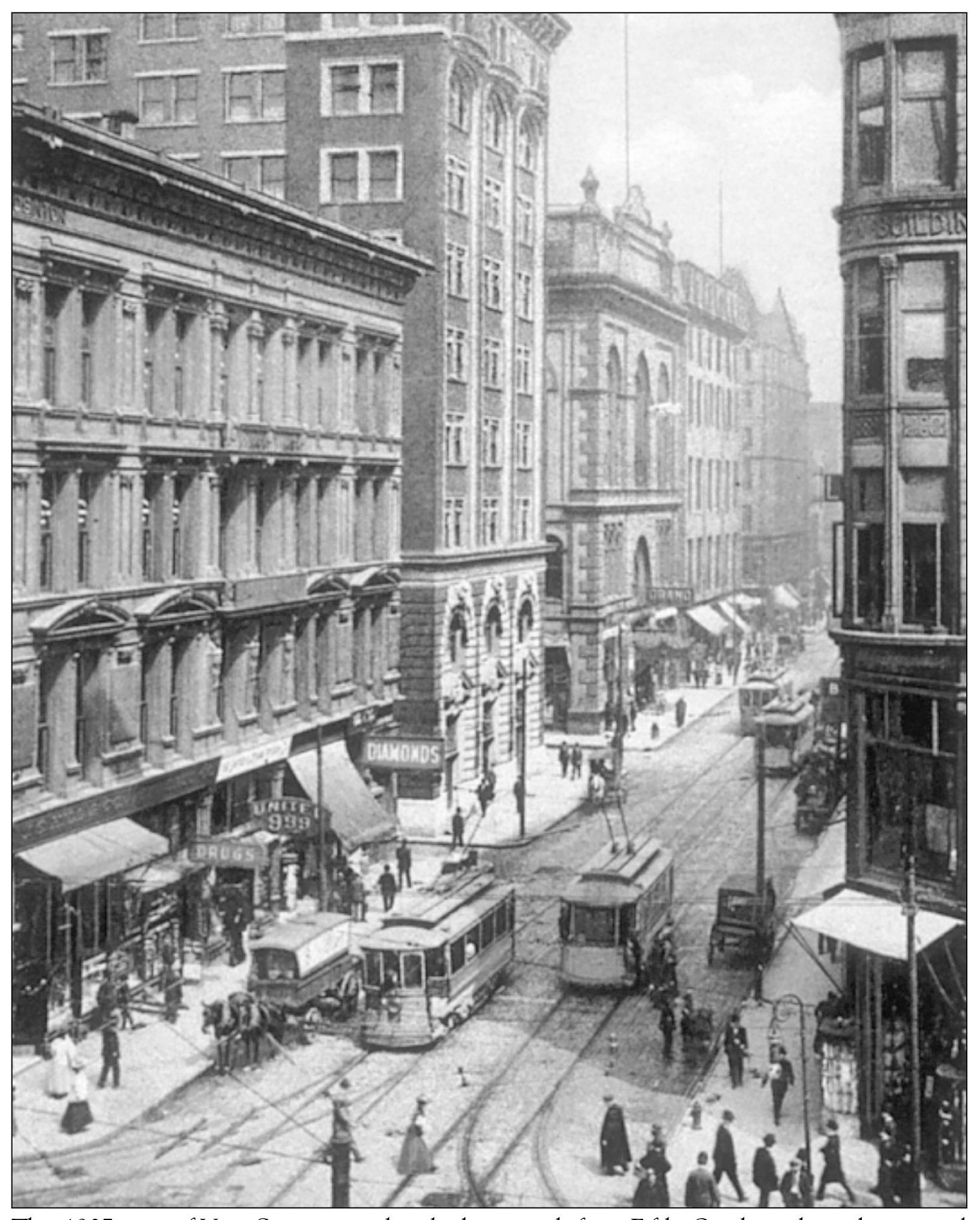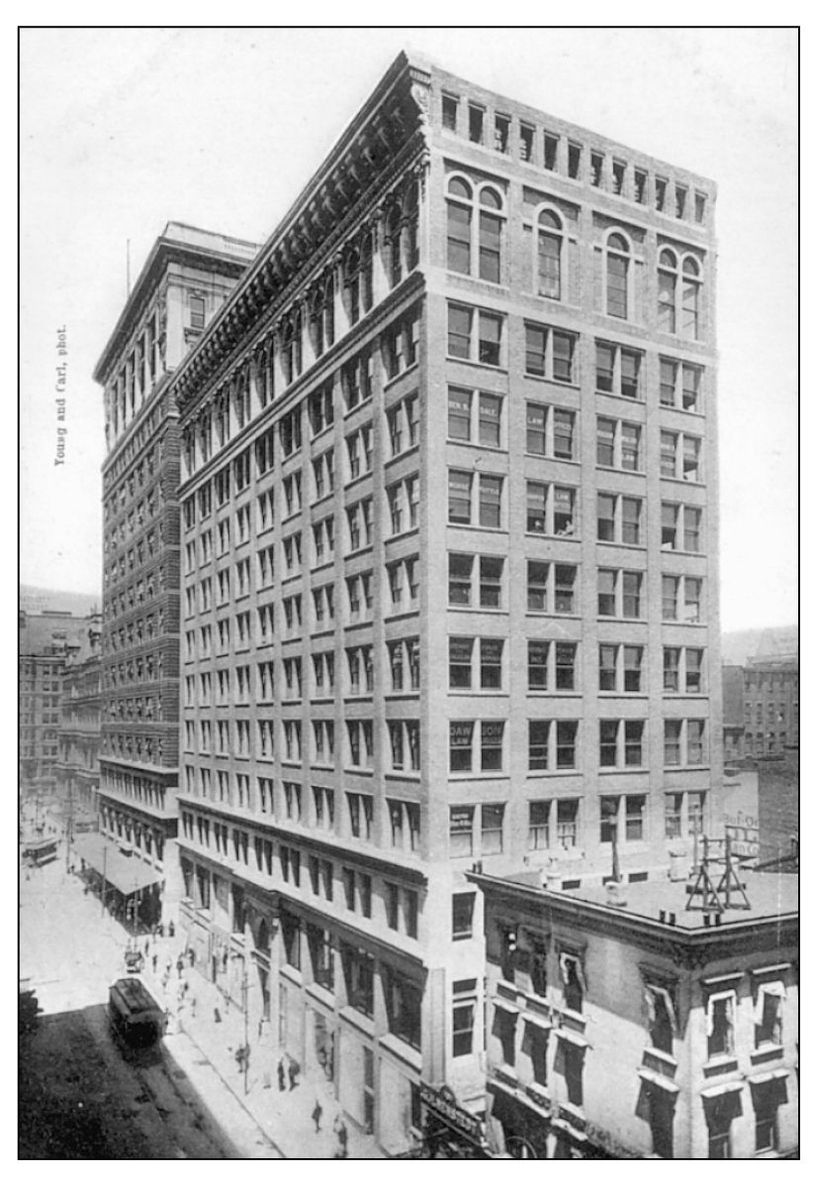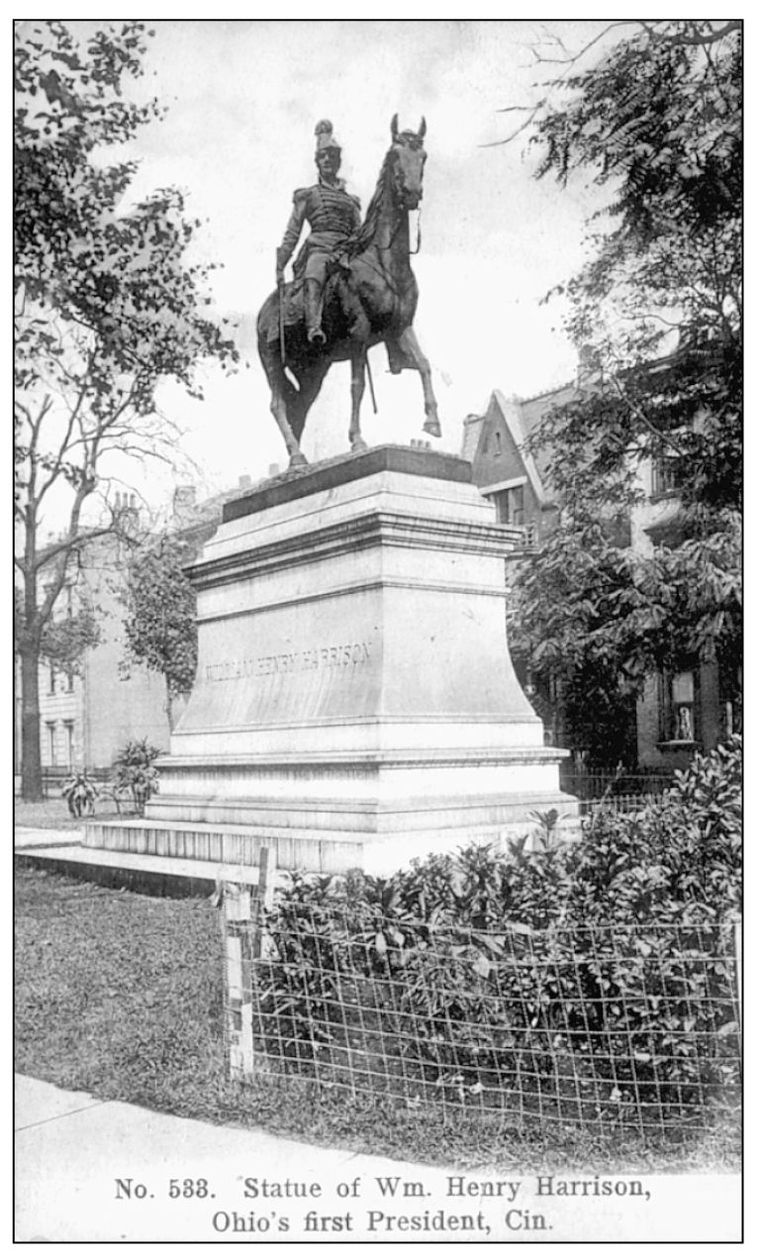ACKNOWLEDGMENTS
We would like to thank our colleagues at the University of Cincinnati with their keen eyes for images: Greg Hand and Jay Yocis; and in the Archives and Rare Books Department Don Tolzmann, Alice Cornell, and Anna Truman.
Thank you to Mary Anna DuSablon for walking all the steps of Cincinnati and discovering their place in the citys history; and to Dan Hurley, who works so hard to make a seamless pattern between past and present. Also, thanks to the late civic activist and photographer Danny Ransohoff, who was always encouraging and enthusiastic in any discussion about documenting the city.
Appreciation goes to Laura Chace and the staff of the Cincinnati Historical Society for their research assistance over the years, and to postcard enthusiasts Don Skillman, Mary Mecklenborg, and Sue Claybaugh.
Thanks to everyone weve bumped into over the past quarter century who had a story to tell, and to all the fine Cincinnati chroniclers who preceded us.
And, especially, thanks to my wife, Joan Fenton, and our assorted Graces: Josh, Sean, Courtney, Bonnie, and Lily; and to Joans grandfather, the late journalist and Terrace Park historian, Ellis Rawnsley. I appreciate all his stories over the years.
KG
Heartfelt thanks to my wife, Michelle, and our daughter Anna, for their patience and support; to my mother and father, Jean and Tom White, for a lifetime of love and encouragement; and to my late uncle, Owen White, whose dedication to lifelong learning continues to provide inspiration. Without their caring and influence this modest achievement would not have been possible.
TW
Find more books like this at
www.imagesofamerica.com
Search for your hometown history, your old
stomping grounds, and even your favorite sports team.
One
THE CITYSCAPE
Fashionable Fourth Street is shown in this 1908 postcard. The street was the citys financial center and home to posh department stores, specialty shops, and hotels. With galleries springing up at the western end of Fourth, it is now notable not only for its lawyers and bankers, but artists and photographers as well.
Given to the city in 1871 by Henry Probasco in memory of his late brother-in-law and business partner, the Tyler Davidson Fountain was designed as an object of function as well as beauty. Water fed to the four drinking fountains positioned around the perimeter was run through yards of copper tubing installed in a subterranean chamber. During the summer months this chamber was packed with ice, providing a continuous flow of chilled water to thirsty citizens.
For nearly a century, the Tyler Davidson Fountain stood on a 60-foot by 400-foot esplanade in the middle of Fifth Street between Vine and Walnut. Rededicated and moved to its present position in 1971, it continues to be Cincinnatis most recognizable symbol.
Designed by Samuel Hannaford, Cincinnatis City Hall at 801 Plum Street is a massive Romanesque structure that occupies an entire city block. A bold and powerful building, City Hall was dedicated on May 13, 1893. Hannaford included numerous stained glass windows depicting Ohio scenes, and made other windows smaller at each ascending level to achieve the illusion of additional height.
The first county courthouse erected at this site was a brick structure built in 1819. Thirty years later, it burned when flames jumped from a fire at an adjacent slaughterhouse. This view is of the third courthouse, constructed after the infamous 1884 riot that burned its predecessor. It served Hamilton County until 1914, when it became outmoded. William Howard Taft laid the cornerstone for the current courthouse in 1915.
This 1907 view of Vine Street was taken looking north from Fifth. On the right is the original Mabley & Carew Department Store, which for years occupied the northeast corner of Fifth and Vine before finally moving to the northwest corner of this busy intersection. The four-story building across the street was later replaced by a twelve-story structure for the Rollman & Sons Department Store. After the Hotel Havlin closed, Rollmans purchased it, opened the adjoining walls, and expanded their retail space into the old hotel. Continuing north, the next facade is that of the Grand Opera House. This building replaced the original 1862 structure, destroyed by fire in 1901. At the southwest corner of Sixth and Vine is the Greenwood Building, home of the Ohio Mechanics Institute from 1848 to 1910.
The Young Mens Mercantile Library Association was founded in 1835, and has been in its 414 Walnut Street location since 1875. The librarys first home on this site was in the College Building, but the current structure was built in 1905. Located on the 11 th floor, the library shares space with retail tenants. It is still a very active downtown reading club, attracting notable authors and speakers, as it has throughout its history.
Located in this view on Vine Street between Sixth and Seventh, Cincinnatis first public library was originally formed in 1855, when small school libraries throughout the city were collected and placed in the rooms of the board of education. On February 26, 1874, the public library opened in a James McLaughlin-designed opera house that never was. The structure, a four-story auditorium with book stacks added around the perimeter, remained the librarys home until 1955, when a new building was constructed at 800 Vine Street.
Dedicated in 1896, this equestrian statue of the ninth president of the United States, William Henry Harrison, was sculpted by Louis T. Rebisso, an instructor at the art academy. Harrison is featured in his military days, much younger and more vigorous than he was during his short presidency. It is the only equestrian statue in the city; yet Rebisso neglected to provide his subject with a saddle! Harrisons memorial was placed at the west end of Piatt Park in 1988.

